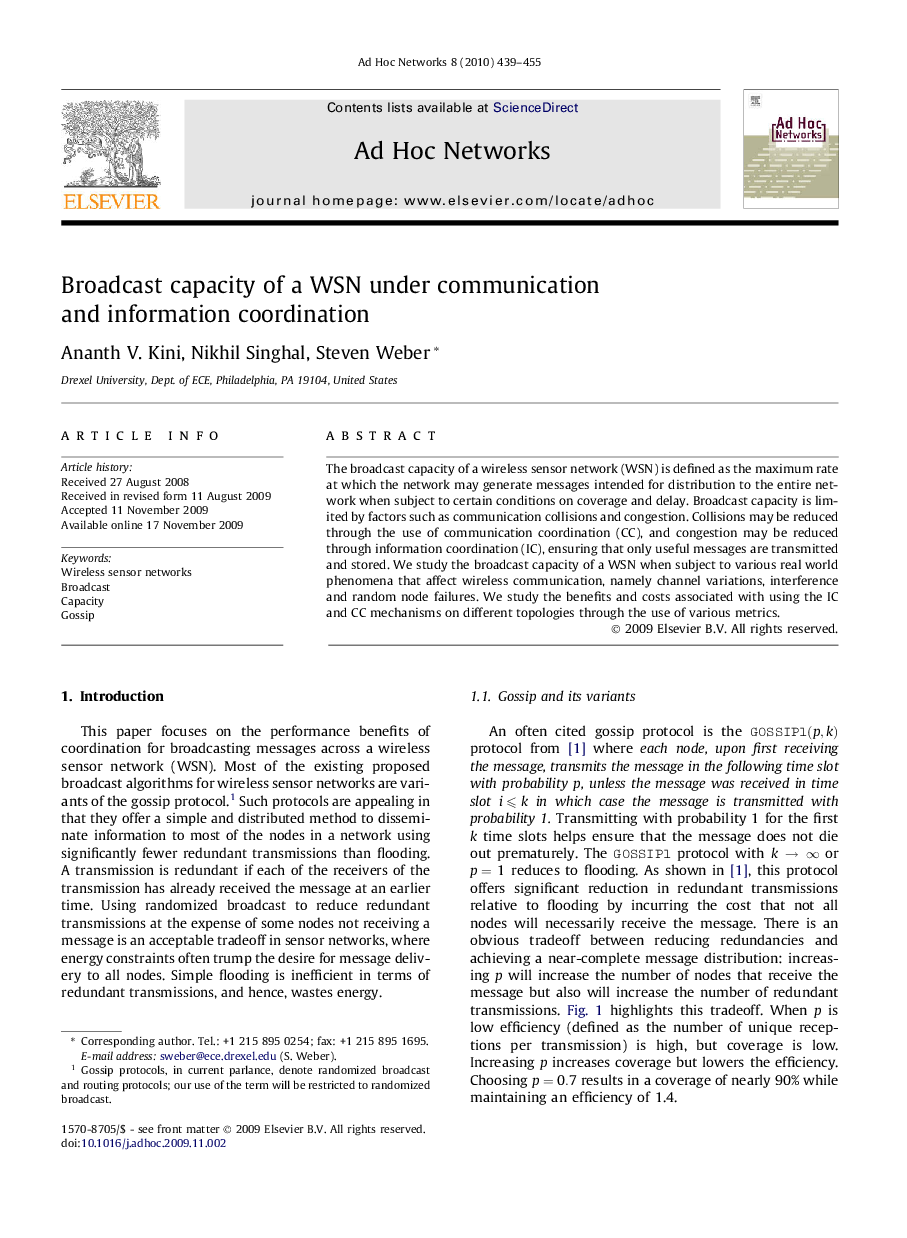| Article ID | Journal | Published Year | Pages | File Type |
|---|---|---|---|---|
| 444747 | Ad Hoc Networks | 2010 | 17 Pages |
The broadcast capacity of a wireless sensor network (WSN) is defined as the maximum rate at which the network may generate messages intended for distribution to the entire network when subject to certain conditions on coverage and delay. Broadcast capacity is limited by factors such as communication collisions and congestion. Collisions may be reduced through the use of communication coordination (CC), and congestion may be reduced through information coordination (IC), ensuring that only useful messages are transmitted and stored. We study the broadcast capacity of a WSN when subject to various real world phenomena that affect wireless communication, namely channel variations, interference and random node failures. We study the benefits and costs associated with using the IC and CC mechanisms on different topologies through the use of various metrics.
